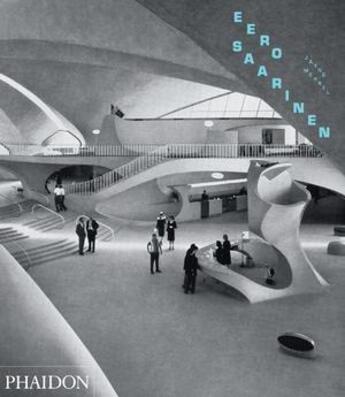Résumé:
Eero Saarinen was one of the world's most celebrated architects at the time of his tragic death at the age of 51. He designed and built more than thirty-five buildings in his lifetime and collaborated on thirty more with his father - the renowned architect Eliel Saarinen.
Eero's career began... Voir plus
Eero Saarinen was one of the world's most celebrated architects at the time of his tragic death at the age of 51. He designed and built more than thirty-five buildings in his lifetime and collaborated on thirty more with his father - the renowned architect Eliel Saarinen.
Eero's career began as far back as childhood: as the son of the esteemed Eliel - designer of Cranbrook Academy in Bloomfield Hills, Michigan - Eero grew up in an intellectually charged environment fuelled by art and design, and entered his first architectural competition while still in school. Eero Saarinen trained and practiced with his father until the early 1950s, when he established his own firm and began to design some of the most influential institutions of his day - amongst them a range of residential colleges, a hockey rink at Yale University, an auditorium and chapel at the Massachussetts Institute of Technology, American embassies in London and Oslo, and corporate complexes for General Motors, IBM, and Bell Laboratories (that spearheaded the creation of the modern suburban office park). While all of these projects blur the boundaries between architecture, art, and landscape, none share a single, identifiable style. Saarinen explored new materials and techniques in every building, developing innovative uses of granite, glazed bricks, reflective glass, concrete, and curtain-wall technology to suit each program. Such wide-ranging approaches to his architecture have made Saarinen difficult to classify, and interest in his work dissipated soon after his death.
This volume is the most thorough monograph to be published to date on Eero Saarinen and the first major publication on the architect in 40 years. Organized chronologically in fourteen chapters, it traces Saarinen's life and career from his childhood in Finland through the collaboration with his father to his iconic airport projects of the 1960s. Overall, it documents more than sixty commissions and competitions. The approximately 300 illustrations include period photography by renowned architectural photographers Ezra Stoller, Balthazar Korab, Harvey Croze, and others. These include rarely seen original sketches, concept drawings, and plans; in addition to more recent color photography. The book also quotes numerous interviews with Saarinen's colleagues and various architecture critics - such as Robert A.M. Stern, Florence Knoll, and Cesar Pelli - to examine how Saarinen was perceived in the past as well as the present.
Donner votre avis














